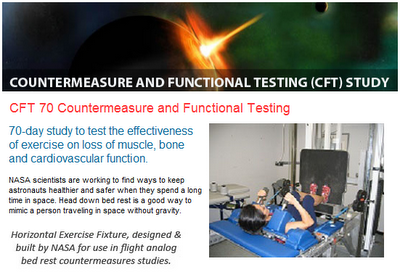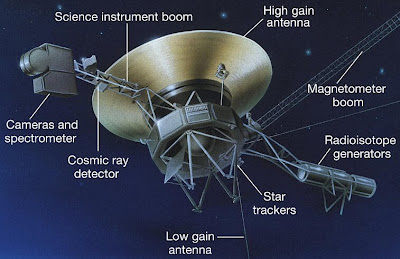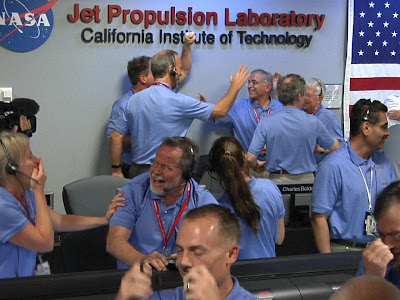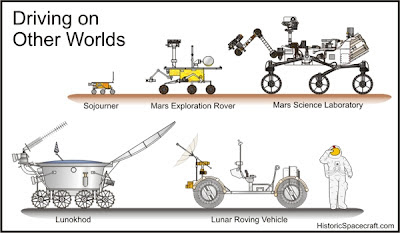
1.
DECEASED:
Neil Armstrong left NASA in 1971, weary from constant requests for appearances. He agreed to appear in documentaries and on key anniversaries. When he was quoted, it’s usually to remind people that while his foot was the first on the moon,
thousands of space program workers put him there. Armstrong passed away August 25, 2012, at the age of 82, of complications following heart surgery.
2.
Edwin "Buzz" Aldrin (age 82) retired from NASA in 1972 and returned to the Air Force, where he had a rocky career due to depression and alcohol problems, but recovered and went on to write or co-author two memoirs, three space history books, and two novels. Now one of the most accessible Apollo astronauts, Buzz makes public appearances all over the world and continues to promote space exploration. He even Danced With The Stars! Again.
3.
DECEASED:
Charles “Pete” Conrad left the space program in 1973 to become chief operating officer of American Television & Communications Corp. and later vice president of McDonnell-Douglas. He also did occasional film/TV appearances and NASA documentaries. Conrad died at age 69 from internal injuries in 1999 after a motorcycle accident in Ojai, CA. He is survived by 3 of his his 4 sons.

4.
Alan Bean (age 80), retired from the Navy in 1975, but continued as head of the Candidate Operations and Training Group within the Astronaut Office as a civilian. He retired from NASA in 1981 to devote his life to painting in his Houston studio, re-creating his views of various Apollo space missions and even incorporating moon dust into his artworks. He has penned two memoirs, co-authored two space program histories, and also written a book about painting.
5.
DECEASED:
Alan Shepard, also the first American in space, retired from both the Navy and NASA in 1974, and became president of the Mercury Seven Foundation in Houston, a non-profit organization which provides college science scholarships. He also served on the boards of many corporations where he had business interests. He co-authored one book about the moon program, though no personal memoir. He died of leukemia in 1998, at the age of 74, survived by his three daughters.
6.
Edgar Mitchell (age 81) retired from both the Navy and NASA in 1972 and founded the Institute of Noetic Sciences (IONS) in Palo Alto, CA. Most recently, he also began work as Advisory Board Chairman of the Institute for Cooperation in Space. He has appeared in documentaries, written two books about science and space, and also infamously announced that NASA has secret knowledge of extra-terrestrial creatures.

7.
David Scott (age 80) retired from the Navy in 1975 to serve as Director of NASA's Flight Research Center, then retired from NASA in 1977. He wrote “Two Sides of the Moon” with Russian Alexei Leonov, the first man to walk in space. He founded Scott Science & Technology near Manhattan Beach, CA. He commentated for British TV on the first Space Shuttle flight (STS-1) in 1981.
8.
DECEASED:
James Irwin left NASA and the Air Force in 1972 to found the evangelical High Flight Foundation in Colorado Springs, CO. He served as their Chairman until he died of a heart attack in 1991, at the age of 61. He was the first of the Moonwalkers to pass away, survived by his 5 children. He wrote 3 space program memoirs, one religious book and co-authored one space history book.
9.
John Young (age 81), after walking on the moon in 1972, also served as commander of the STS-1 and STS-9 missions on Space Shuttle Columbia. As he had also flown two Gemini and two Apollo missions, he became the first man to fly six missions across 3 programs. He retired from NASA in 2004, after a 42-year career at JSC, still lives in Houston and makes occasional personal appearances on behalf of the space program.

10.
Charles Duke (76) was already a retired Air Force Reserve Brigadier General before he walked on the moon in 1972. He retired from NASA in 1975 and founded Duke Investments, Duke Enterprises and Duke Ministry for Christ, based in New Braunfels, TX. He is also chairman of the board of directors of the Astronaut Scholarship Foundation.
11.
Harrison “Jack” Schmitt (77) resigned from NASA in 1975 and worked as a consultant and writer/speaker. In the late 80s, he ran for the U.S. Senate representing New Mexico, and served 6 years in Congress. In the 90s, he was professor of engineering at the University of Wisconsin and also President of the Annapolis Center for Environmental Quality. He now lives in Albuquerque, NM. Schmitt claims to have taken the photograph of Earth known as "Blue Marble", one of the most popular photographic images in existence (NASA officially credits the entire Apollo 17 crew).
12.
Eugene Cernan (78) was the last man to walk on the moon in 1972, hence his 1999 book, “The Last Man On The Moon.” Catchy! He retired from NASA and the Navy in 1976 and formed the Cernan Corporation in Houston. He later served as Chairman of the Board for Johnson Engineering Corp., a NASA contractor which designs space crew stations and habitats. He was once a contributor to Good Morning America, and still appears on many televisions shows, and makes personal appearances for the space program.





































































































